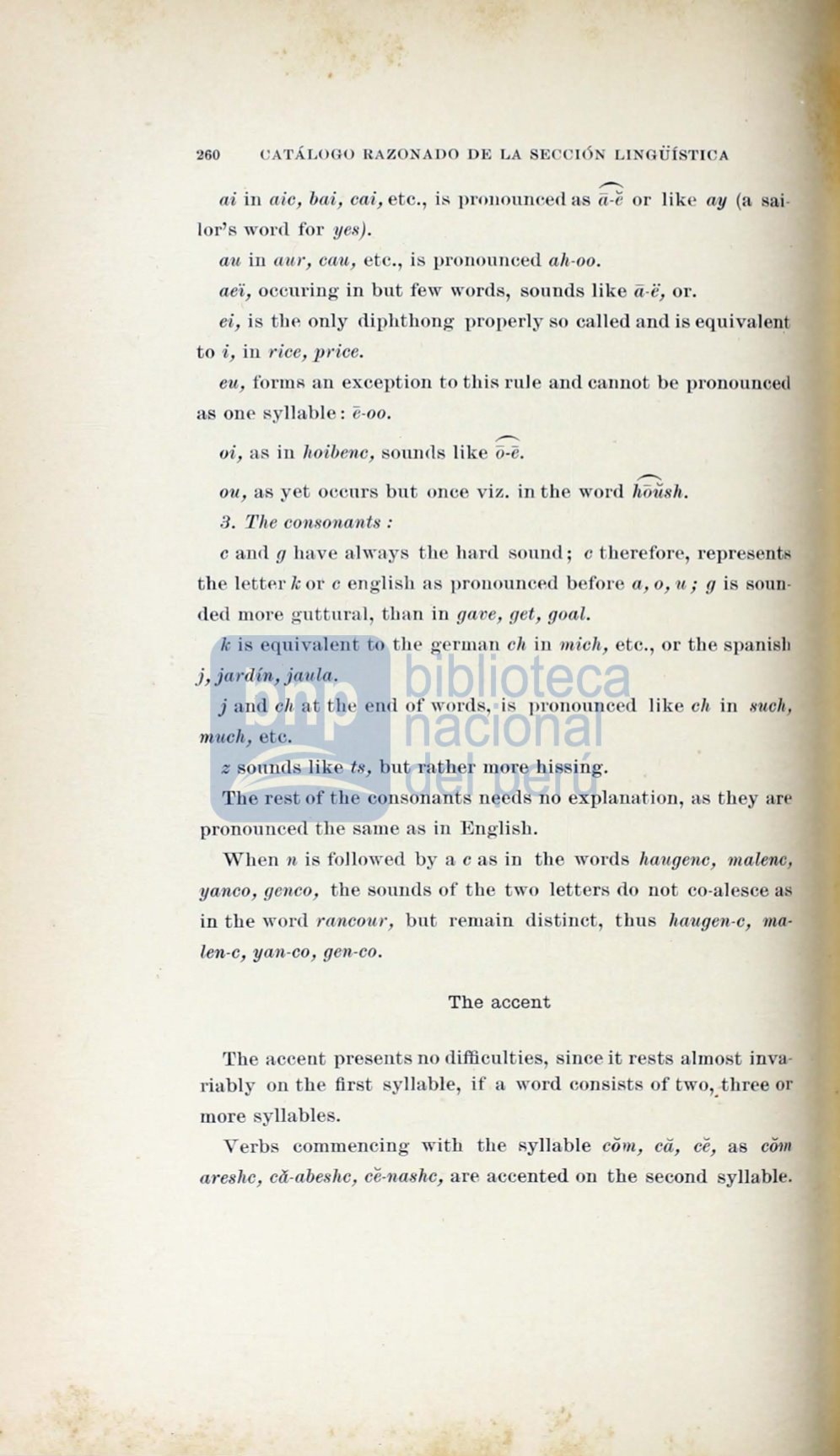

260
UATÁLOGO RAZONADO DE LA SECCIÓN Ll 'GÜÍS'l'!CA
,-..._
ai
in
aio, bai, oai,
etc., is pr<mouncecl as
a-e
or like
wy
(a sai-
lor's word for
yes).
a1i
in
ci1ir, oa1i,
etc., is pronounced
ah-oo.
ae~,
occuring
in
but few words, sounds like
a-e,
or.
ei,
is the ouly cliphthong properly so called and is equivalen.t
to
i,
in
rioe, prioe.
eu,
formR au exception to this rule and cannot be pronouncecl
as one syllable:
e-oo.
oi,
as in
hoibeno,
somHls like
~.
,-..._
ou,
as yet occnrs but once viz. in the word
h(n/,sh.
3. The oonsonants:
o
and
g
have ahYays the hard souud;
o
therefore, represents
the lettf':r
le
or
o
english as prouounced before
a, o, u; g
is soun–
ded more guttural, than in
gave, get, goal.
le
is equivalent to the german
oh
in
mioh,
etc., or the panish
j, jardín, jaiila..
j
arÍd
oh
at the end of words, is pronounced Jike
oh
in
such,
nnioh,
etc.
z
sonnds like
ts,
but rather more his ing.
The rest of the consonants needs no explana.tion,
~ts
they are
pronouneed the same as iu English.
Wben
n
is followed by a
o
as in the words
haugeno, malenc,
yanco, genoo,
the sounds of the two letters do not co-alesce as
in the word
rancour,
but rernain di tinct, tbus
haJ1igen-o, nw·
len-e, yan-co, gen-co.
The accent
The accent preseuts no difficulties, since it rests ahnost inva·
rhtbly on the fi.rst syllable, if a word consists of two,_ three or
more syllables.
Verbs commencing with the syllable
coin,
oa, oe,
as
cifo1
areshc, oa-abeshc, o'é-nashc,
are accented on the second syllable.
















